10 Essential Foreign Films
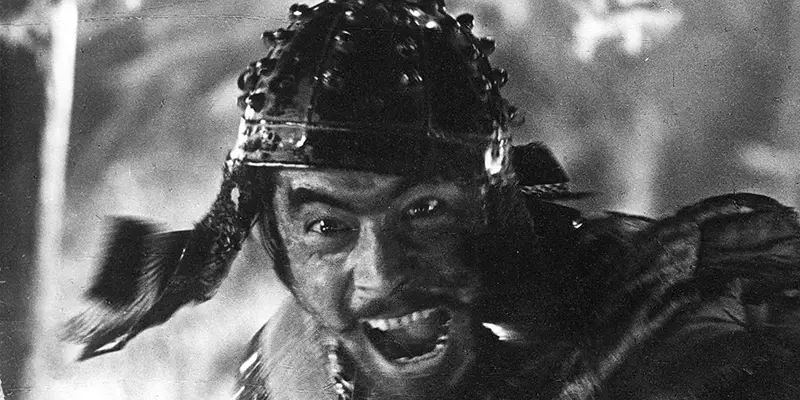
Sam is 25 years old from the West Midlands region…
It may be fair to say that in the film industry, any motion picture that is not spoken in the English language is tagged under ‘foreign’. As we all know, Hollywood cinema is dominant among the world of film due to technological advancements, box office strategies for blockbusters, and stardom. For this reason, audiences are usually very selective when it comes to watching ‘foreign’ films.
Why is this? Could it be an issue with listening to another language they do not understand? Could it be due to reading subtitles? Or could it be the discomfort of watching unfamiliar filmic elements and plotlines? The question remains – how do we convince audiences to look outside the box and pay more attention to other industries across the globe?
Well, this list features 10 films (and a few honourable mentions) from various countries that come as highly recommended in foreign cinema. Some provide an insight into their home country lifestyles, while others possess unique artistic and technical values that are considered entertaining in a similar way to Hollywood productions. Therefore, each film selected will help educate students in film & media studies, as well as encourage so-called film enthusiasts to expand their horizons.
10. A Trip to the Moon (1902)

ORIGINAL TITLE: Le Voyage Dans La Lune
COUNTRY: France
It seems only fitting to first introduce this list with A Trip to the Moon (1902), a pioneering achievement and a valuable piece of cinema history. Originally from France and directed by Georges Meliés, often known as ‘the Father of Cinema’, comes a unique motion picture about astronomers who venture to the Moon, encounter alien-like Selenites and escape back to the Earth.
The plot is very straightforward and only runs from 9-18 minutes (depending on which version you decide to watch), but its innovative creativity in storytelling and technicality for 1902 declares it as a breakthrough triumph and as an inspirational source for other films following its release. Also, because there was no motion picture sound at the time, the silent film experience exemplified that the on-screen images tell the story instead of dialogue and diegetic sound.
Even now after over a century, A Trip to the Moon (1902) remains a cherished prize of general filmmaking, as well as French cinema, and a sublime example of cinematic art in its early years. For contemporary audiences with a selective choice, this film and Meliés’ work is depicted in Martin Scorsese’s Hugo (2011).
9. The 400 Blows (1959)
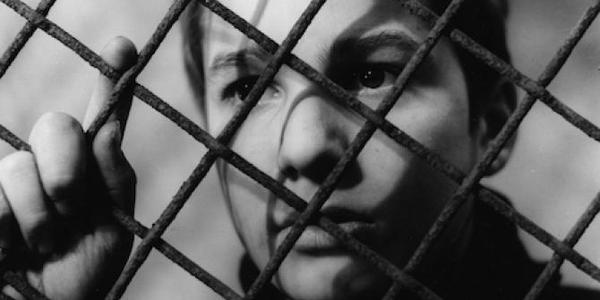
ORIGINAL TITLE: Les Quatre Cents Coups
COUNTRY: France
Like many films in this list, The 400 Blows is considered the goldmine of another cinematic movement. This time it is in the form of the French New Wave, a time in the 1950’s and 1960’s in which a small group of French film critics became directors and began developing their creativity from paper to screen. The 400 Blows, in particular, is a prominent feature in this style and to general independent filmmaking.
Based loosely on director François Truffaut’s own adolescent youth, The 400 Blows follows a young Parisian boy Antoine Doinel (Jean-Pierre Léaud). He has an unhappy home life, lives with poor parents and has built a reputation of deceit, skipping school and sneaking into movie theatres. Following this, the consequences for Antoine’s actions await.
The 400 Blows is a semi-autobiography and is, therefore, a significant example of what the average person or film enthusiast can cinematically translate from their own lives. The Academy seemingly acknowledged this in 1960 with a Best Original Screenplay nomination for the film. Therefore, The 400 Blows is a recommended feature for film enthusiasts not only in wanting to explore foreign, specifically French cinema, but also to further inspire them to become directors.
8. Seven Samurai (1954)

ORIGINAL TITLE: Shichinin No Samurai
COUNTRY: Japan
Although many contemporary viewers may recognise Japanese cinema as animé, their industry had a Golden Age in the early days. It was led primarily by the works of Akira Kurosawa (1910-1998), who is considered one of cinema’s most influential directors. Most of his work consisted of historical period dramas from the 15th century through to the 19th. One such film that focuses on this, and is perhaps his best known, is Seven Samurai (1954).
Set during Japan’s Warring States era, Seven Samurai tells the story of village farmers who are ambushed by bandits looking to steal their crops after the harvesting season. In response, villagers hire a group of seven samurai warriors to fight against the bandits in order to restore peace in the community.
Seven Samurai is considered one of the greatest action-adventure films to date. Its action set pieces are exciting and intense, which audiences should appreciate, and it also introduces people to the issues that Japan faced during those historical periods. Therefore, the film is both an entertaining and educational tool. Seven Samurai is also the source of many remakes, particularly westerns like The Magnificent Seven (1960), and is influential to other films such as Pixar’s A Bug’s Life (1998). Seven Samurai is ranked #1 on EMPIRE’s Best of World Cinema list, and stands among the highest foreign films on IMDB’s Top 250.
7. City Of God (2002)
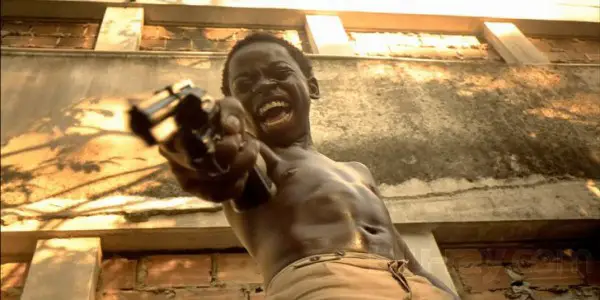
ORIGINAL TITLE: Cidade de Deus
COUNTRY: Brazil
With the disadvantage of low-budgets and its regular use of non-professional actors in Third World countries such as in South America (aka Latin America), many films of these particular regions centre on their cultural circumstances within a fictional context. The Brazilian film City Of God by Fernando Meirelles and Kátia Lund is a prime example.
City of God is set in the Brazilian city of Rio De Janiero and tells the story of two friends Rocket (Alexandre Rodrigues) and Li’l Zé (Leandro Firmino) growing up in the 1960’s. Their youthful days become strained in their violent neighbourhood of robbery and murder. Upon growing up, each one take different paths – Rocket as a photographer and Li’l Zé as a drug dealer.
In some ways, City Of God is Latin America’s version of Goodfellas, as it is a critically acclaimed gangster film set in a corrupt underworld of violence. Meirelles’ film is currently ranked in the top 30 of IMDB’s top 250 films, #7 in EMPIRE’s Best of World Cinema list and received four Academy Award nominations (including Best Director, Best Adapted Screenplay, Best Cinematography and Best Film Editing). Despite being based on the novel of the same name by Paulo Lins, City of God is an authentic representation of the unethical traits of 1960’s Rio De Janiero, and is a must-see feature of Latin American cinema.
6. Bicycle Thieves (1948)
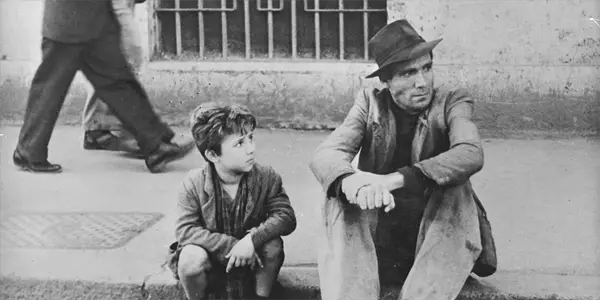
ORIGINAL TITLE: Ladri di Biciclette
COUNTRY: Italy
In the aftermath of World War II, Italy was defeated and had to reconstruct their economy. This, of course, included their film industry. And their response? A short-lived era known as Italian Neorealism that centred on narratives about the working class and non-professional actors. In other words, they reflected their current economic situation following the war.
The work of filmmakers like Roberto Rossellini (1906-1977) and Vittorio De Sica (1901-1974) were part of the movement that revolutionised Italian cinema. De Sica’s Bicycle Thieves, in particular, follows this structure. It tells the story in post-war Rome of poor father Antonio (Lamberto Maggiorani), who finds a job advertising posters, one that requires a bicycle. When his bicycle is stolen, he searches across Rome with son Bruno (Enzo Staiola). That’s about it.
Bicycle Thieves is among those films with very simple plots, but has a socially and economically complex outcome. It is also a great film for its technical and narrative values, having been shot at a very low budget. It stands in the top 100 of IMDB’s Top 250 films, in the top 10 of BFI’s list of The 50 Films You Should See by the Age of 14, and is ranked at #4 in EMPIRE’s Best of World Cinema list. That being said, Bicycle Thieves is highly recommended as a feature to learn about Italian culture in real circumstances, and as a simple drama with engaging characters.
5. Run Lola Run (1998)
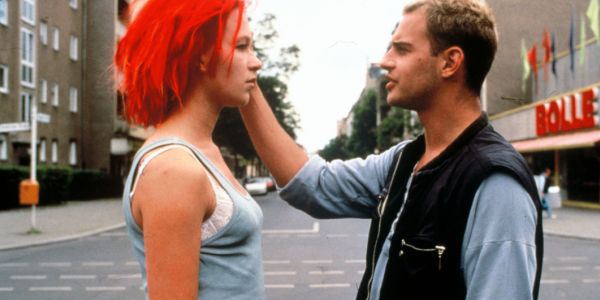
ORIGINAL TITLE: Lola Rennt
COUNTRY: Germany
Run Lola Run comes as a special addition to this list for its unique practical values and narrative structure. Directed by German filmmaker Tom Tykwer, Run Lola Run utilises extraordinary techniques (including jump-cuts in editing, flashbacks and flash-forwards, black-and-white cinematography and its extraordinary use of animation), whilst following a three-stage narrative structure.
Set in the German capital of Berlin, Lola (Franka Potente) is in need to help her boyfriend Manni (Moritz Bleibtreu) regain the 100 Deutschmarks that he lost on a subway train. Otherwise, he will steal the money from a nearby store. It is, therefore, up to Lola to reach Manni’s location within 20 minutes (by running) to get the money herself and stop him.
In total, Lola runs to Manni’s location three times at three different stages in the narrative, each with different outcomes. Each run serves similarly as a ‘life’ does in a video game, and the animation is depicted like a comic book sequence. The extraordinary style of Berlin being depicted as something comical conveys an original but engaging experience. Needless to say, Run Lola Run comes as a highly recommended film for its entertaining assets in visual style, narrative structure and engaging character development. Run Lola Run could also be a crucial case study for Film Studies for all of these same reasons.
4. Nosferatu (1922)
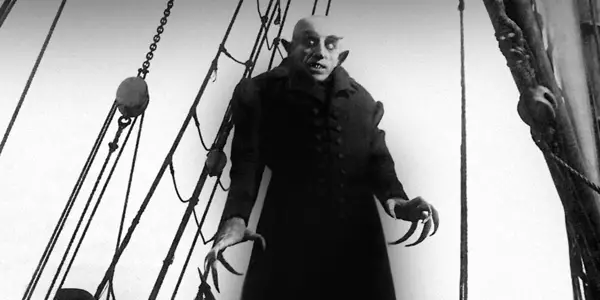
ORIGINAL TITLE: Nosferatu, eine Symphonie des Grauens
COUNTRY: Germany
Out of all the film adaptations based on Bram Stoker’s gothic horror Dracula, F.W. Murnau’s Nosferatu may be the ultimate interpretation. Despite being criticised for its certain level of inaccuracy of the original novel, it was still its first adaptation and has since been a crucial landmark in German Expressionist cinema.
German Expressionism was known for its unique characteristics of bizarre settings, unusual framing and highly stylised lighting. It is apparent in other forms of art, but cinematically Nosferatu ticks all of these boxes. It is also worth noting that Nosferatu is a silent film which relies heavily on the film’s visual delivery. Along with a number of iconic images, particularly the staircase shot, Nosferatu is a visual delight and a breakthrough for horror.
On that note, German Expressionist cinema was the influential source of horror films in Hollywood and of many well-known directors today, including Tim Burton. Considering this, Nosferatu still remains a classic for its unorthodox and oblique style. Intrigued to learn more about the origins of horror cinema? Be sure to see it and continue with other German Expressionist films.
3. Amélie (2001)
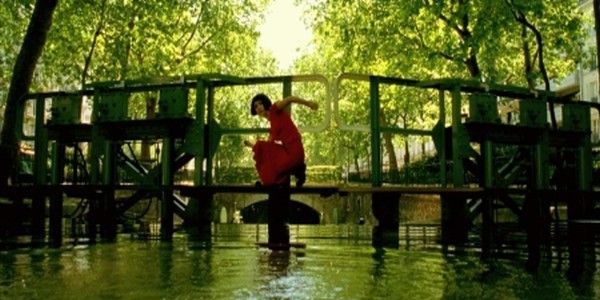
ORIGINAL TITLE: Le fabuleux destin d’Amélie Poulain
COUNTRY: France
Out of all contemporary French films that stand out among its best for today’s audience, it would easily be Amélie. Released in 2001, it tells the story of its titular character (Audrey Tautou) living in the city of Paris as a waitress whose romantic life takes a change upon noticing a photo of young Frenchman Nino (Mathieu Kassovitz).
Throughout the film, we follow Amélie through the suburbs of Paris and her quest for love after an unorthodox upbringing. Its breathtaking visual style alone is enough to absorb audience interest. With such an original and delightful heroine, you may even fall in love with her too. Amélie presents a spectacular perspective of France with its dazzling cinematography and a delightful yet original interpretation of modern Parisians.
The film garnered five Academy Award nominations, including Best Foreign Language Film, Best Original Screenplay, Best Cinematography, Best Art Direction and Best Sound. Unfortunately, it failed to win one of these. Despite this, Amélie is ranked among the top 100 of IMDB’s Top 250 films and is #2 on EMPIRE’s Best of World Cinema list, so it still stands out as a treasure of modern French cinema.
2. Spirited Away (2001)
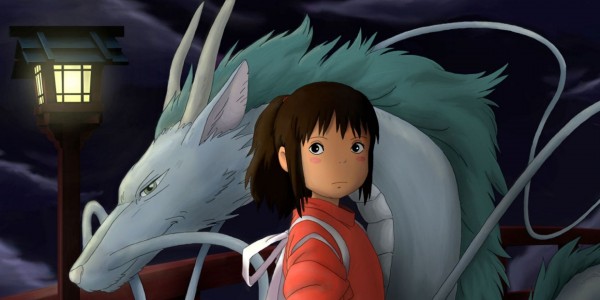
ORIGINAL TITLE: Sen To Chihiro No Kamikakushi
COUNTRY: Japan
Another considerable era of Japan’s Golden Age of Cinema is through the works of Hayao Miyazaki. Known for his animé features, Miyazaki has produced some of the most imaginative and unique children’s films to date. The one film that stands out as his finest achievement is Spirited Away (2001), which won the Academy Award for Best Animated Picture in 2002.
The film follows 10-year-old Chihiro, who moves into a new neighbourhood with her parents. After wandering through the suburbs, her family transforms into pigs and she discovers a mystery world. Upon meeting unique figures and becoming employed within this realm, Chihiro must unite with Haku, who can transform into a dragon, to return both herself and her parents to the real world.
Spirited Away is a fine example of a story that we see through the eyes of a young girl and learn avidly from a unique director’s wonderful imagination. It is ranked #10 in EMPIRE’s Best of World Cinema, in the top 10 of BFI’s list of The 50 Films You Should See by the Age of 14 and among the top 100 of IMDB’s Top 250. Hayao Miyazaki is a pioneering director of animation. His work, particularly Spirited Away, is about the closest that foreign cinema gets to matching Disney magic.
1. Pan’s Labyrinth (2006)

ORIGINAL TITLE: El Laberinto del Fauno
COUNTRY: Spain
Having kick-started his career as a dark fantasy and horror director, Guillermo Del Toro has seemingly provided his ultimate masterpiece with Pan’s Labyrinth. It is a favourite among contemporary viewers for its breathtaking visuals and its uniquely original storyline. It conveys on audience emotions by at times being magical, and at others being horrifying in terms of violence and tragic moments. By primarily addressing the horrors of war through the eyes of a young girl, we are whisked into her imagination.
Pan’s Labyrinth is set in 1944 during the Spanish Civil War. It follows the story of young girl Ofelia (Ivana Baquero) and her pregnant mother to live with the sadistic Captain Vidal (Sergi López) of the Spanish navy. Whilst there in the wilderness, Ofelia encounters a Faun who requests she complete three task before she can fulfill her royalty. Some of these are dangerous and have severe consequences.
Pan’s Labyrinth is a film that focuses on the Spanish Civil War as equally as it does on the imagination of an innocent during those difficult times. Only in the unique mind of Guillermo Del Toro could this idea hit the screens, and it appears the critics and audiences alike loved it. Pan’s Labyrinth won the Academy Awards for Best Cinematography, Best Art Direction and Best Make-Up. It was also nominated for Best Original Screenplay, Best Foreign Language Film and Best Original Score. With all these allocates, it is fair to say that Pan’s Labyrinth is a crucial must-see in foreign cinema and is a treasured item in the contemporary Spanish film industry.
Honourable mentions:
- The Seventh Seal (1958, Sweden), Let The Right One In (2008, Sweden), M (1931, Germany), The Girl With The Dragon Tattoo (2009, Sweden), Crouching Tiger Hidden Dragon (2000, Hong Kong & China), Metropolis (1927, Germany), Downfall (2004, Germany), 8 ½ (1963, Italy), Persepolis (2007), Battle Royale (2000, Japan) and La Dolce Vita (1960, Italy).
Conclusion
Every film covered in this list was made during different time periods, with the oldest being A Trip To The Moon and the most recent being Pan’s Labyrinth. ‘Foreign’ cinema stands outside Hollywood, specifically as they do not feature spoken English dialogue nor have been distributed by a Hollywood studio. Many of these films center on the nation itself (with a few genre twists) to provide viewers with a cultural understanding. This is not always true, but each film discussed certainly shows what foreign directors across different continents in the world are capable of in the film industry.
As a film graduate with a diverse interest in world cinema, all ten films (and the honourable mentions above) come as highly recommended foreign films that you must see. One final additional note: they can all be accessed on DVD and Blu-ray, and can be viewed in dubbed English or in its original language with provided English subtitles.
Do you agree with my list? Are there any others that you would have added instead?
(top image: Seven Samurai (1954) – source: Toho)
Does content like this matter to you?
Become a Member and support film journalism. Unlock access to all of Film Inquiry`s great articles. Join a community of like-minded readers who are passionate about cinema - get access to our private members Network, give back to independent filmmakers, and more.
Sam is 25 years old from the West Midlands region of the UK, who has a passion for the world of cinema and publishing. He is currently studying a postgraduate degree in Film & Television: Research and Production at the University of Birmingham. He is currently working in theatre and academic support.













